History of Sebastian Drainage System
The St. Sebastian River has been identified by the Indian River Lagoon National Estuary Program and the Indian River Lagoon SWIM Program as a priority waterbody in need of water quality rehabilitation and protection (IRLNEP, 1996; SJRWMD and SFWMD, 1994). It is a major tributary of the Indian River Lagoon. Agricultural lands west of Sebastian account for a major portion of the run-off to the watershed and contribute significantly to the storm water discharge through man-made drainage systems to the St. Sebastian River. The City of Sebastian is the primary urban center, which lies along nearly 9 miles of the lower eastern and southern banks of the St. Sebastian River and occupies approximately 9,000 acres of the 100,000 acres overall Sebastian River Watershed.
In the late 1950s, General Development Corporation (GDC) designed and constructed the street and drainage infrastructure to support development of approximately 15,000 single-family home sites. Most of these home sites have been developed by the late 1990. The City of Sebastian is presently experiencing a dramatic population growth, far greater than other areas in the watershed. This rapid growth is expected to continue for the foreseeable future.
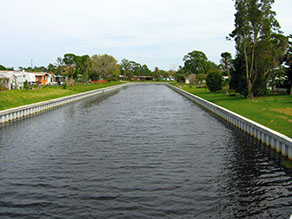 The City's existing storm drainage system is inadequate for the impacts of quality water on the St. Sebastian River and Indian River Lagoon. The majority of the City's storm water run-off is delivered by a system of canals, ditches and swales to the St. Sebastian River which ultimately ends up in the Indian River Lagoon. Initially installed during the early phases of the land development to the 1950's standards, this existing system does not provide the storm water storage or water quality treatment required by present day development standards.
The City's existing storm drainage system is inadequate for the impacts of quality water on the St. Sebastian River and Indian River Lagoon. The majority of the City's storm water run-off is delivered by a system of canals, ditches and swales to the St. Sebastian River which ultimately ends up in the Indian River Lagoon. Initially installed during the early phases of the land development to the 1950's standards, this existing system does not provide the storm water storage or water quality treatment required by present day development standards.
It has been suggested that throughout the Indian River Lagoon, increases in turbidity have greatly reduced the area suitable for seagrass growth as a result of non-point source pollution. The grass beds immediately south of the mouth of the St. Sebastian River have consistently become more fragmented over time. There has also been an overall reduction in the total grass bed acreage and decreases in the maximum depth of these beds throughout the Indian River Lagoon.
The St. Johns River Water Management District (SJRWMD) and South Florida Water Management District (SFWMD) identified a number of drainage basin-specific concerns for the St. Sebastian River watershed. The principal concern has to do with the considerable inputs of freshwater and its effects on the salinity within the receiving waters. Excessive freshwater drainage into the estuarine waters may result in species shifts that disrupt ecologically and economically important nursery areas. In addition, there is concern regarding increased suspended matter and nutrient loading associated with this freshwater input. This non-point source pollution may degrade water quality and affect local seagrass and shellfish populations.
The City of Sebastian, through its Master Stormwater Management Plan (endorsed by SJRWMD) is working to specifically address the quantity and quality impacts of the City's stormwater on the St. Sebastian River. The City's objective is to initiate Best Management Practices and increase wet detention areas to reduce the pollutant loading and fresh water discharge to the St. Sebastian River and the Indian River Lagoon.
In 2015, The City of Sebastian received an achievement award for Environmental Stewardship from the League of Florida Cities for Water Monitoring and testing program.
The City has taken major advances in the last few years to reduce storm water pollutant into the Indian River Lagoon by installing Nutrient Separating Baffle Boxes with filters to reduce the amount of nitrogen and phosphorus. The photos are from the recently completed street enhancement project called “Presidential Streets” which installed three baffle boxes to the existing drainage outfalls into the Indian River Lagoon
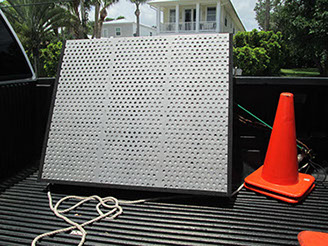
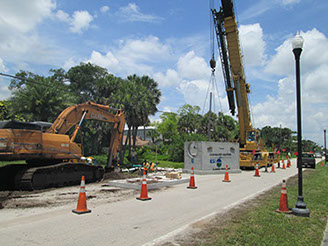
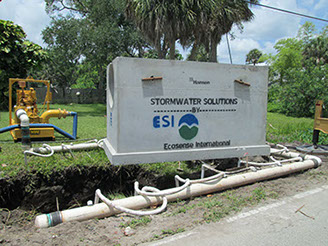
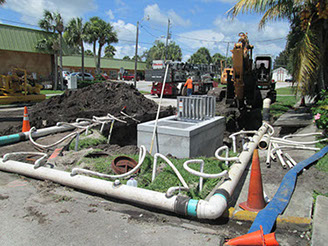
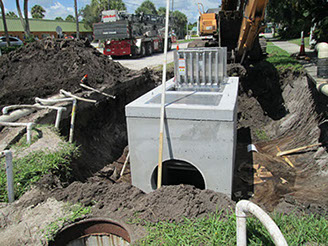


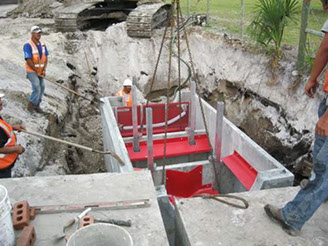
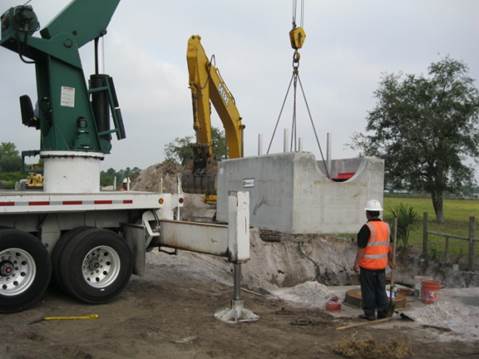
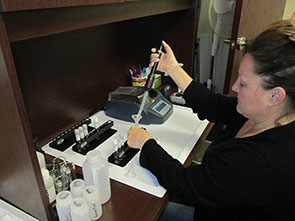
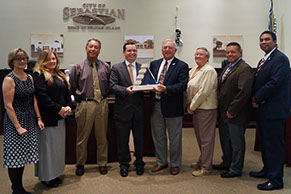
In 2014, The City established a water quality monitoring and testing of storm water discharges. The city staff collects monthly samples of water from discharge locations to test for nitrogen and phosphorus.
Copyright (C) 2019 - City of Sebastian - Problems or Questions: contact jzingarelli@cityofsebastian.org